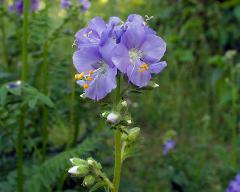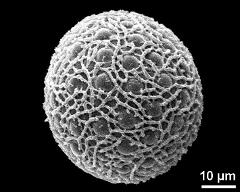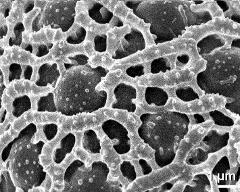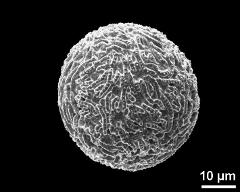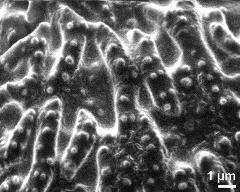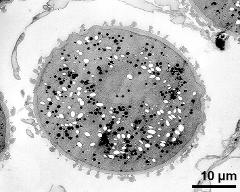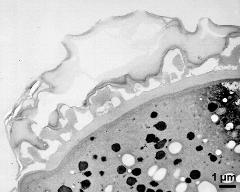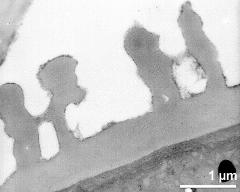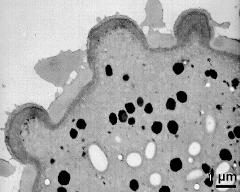Polemonium caeruleum
Taxonomy: Spermatophyta, Solanales, Polemoniaceae, Polemonium
Published: 2005-06-01
Pollen Description
Shape, Size and Aperture
pollen unit: monad, dispersal unit and peculiarities: monad, size (pollen unit): medium-sized (26-50 µm), size of hydrated pollen (LM): -, shortest polar axis in equatorial view (LM): -, longest polar axis in equatorial view (LM): -, shortest diameter in equatorial or polar view (LM): -, longest diameter in equatorial or polar view (LM): -, pollen class: -, polarity: isopolar, P/E-ratio: -, shape: spheroidal, outline in polar view: circular, dominant orientation (LM): -, P/E-ratio (dry pollen): -, shape (dry pollen): spheroidal, outline in polar view (dry pollen): circular, infoldings (dry pollen): not infolded, aperture number: >6, aperture type: -, aperture condition: porate, aperture peculiarities: pantoaperturate, aperture membrane ornamented
Ornamentation and Structure
LM ornamentation LM: reticulate, nexine: -, sexine: -, SEM ornamentation SEM: granulate, reticulate, heterobrochate, suprasculpture SEM: -, TEM tectum: semitectate, infratectum: columellate, foot layer: continuous, endexine: absent, intine: monolayered, wall peculiarities: -, supratectal element: -
Miscellaneous
pollen coatings: pollenkitt, reserves in cytoplasm: starch, lipids, cell number: -, Ubisch bodies: absent
Author(s) of diagnosis: Halbritter, H.; Svojtka, M.
Pictures
Picture legend
- flower(s), photographer: Halbritter, H.
- hydrated pollen grain - fresh, rehydrated (water) & critical point dried & sputter coated with gold, photographer: Svojtka, M.
- exine surface - fresh, rehydrated (water) & critical point dried & sputter coated with gold, photographer: Svojtka, M.
- dry pollen grain - dry, sputter coated with gold, photographer: Svojtka, M.
- exine surface of dry pollen grain - dry, sputter coated with gold, photographer: Svojtka, M.
- cross section of pollen grain - fresh, glutaraldehyde & osmium & potassium ferrocyanide, uranyl acetate & lead citrate, photographer: Svojtka, M.
- pollen wall - fresh, glutaraldehyde & osmium & potassium ferrocyanide, uranyl acetate & lead citrate, photographer: Svojtka, M.
- detail of pollen wall - fresh, glutaraldehyde & osmium & potassium ferrocyanide, uranyl acetate & lead citrate, photographer: Svojtka, M.
- apertures - fresh, glutaraldehyde & osmium & potassium ferrocyanide, uranyl acetate & lead citrate, photographer: Svojtka, M.
- generative cell - fresh, glutaraldehyde & osmium & potassium ferrocyanide, modified Thiéry-test, photographer: Svojtka, M.
Literature
Copyright and Citation
Cite this publication as:
Halbritter H., Svojtka M. 2005. Polemonium caeruleum. In: PalDat - A palynological database. https://www.paldat.org/pub/Polemonium_caeruleum/113466;jsessionid=A645F41E7CB49353D5F80EC1273CECB7; accessed 2024-04-25

